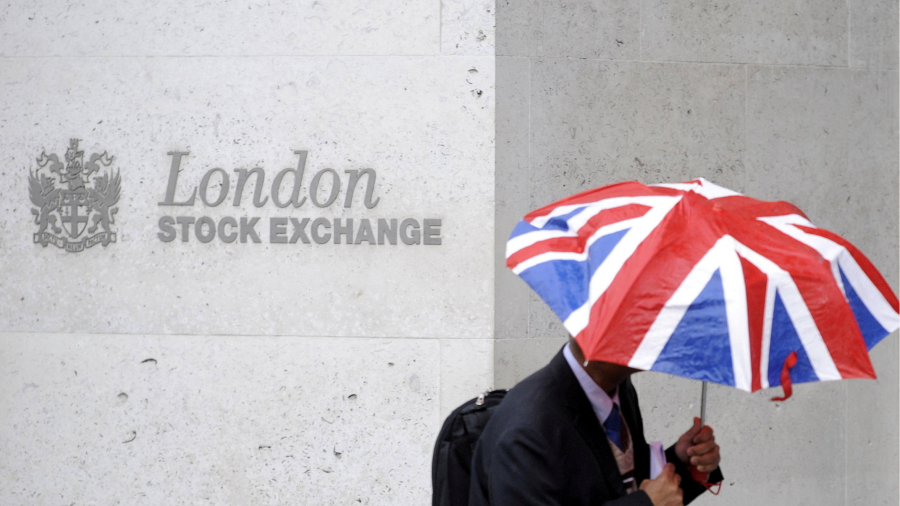Financial markets assess the health of a nation’s economy, and its political stability, in two ways. The fledgling Truss-Kwarteng administration is off to a shaky start, at least as far as the government bond and currency markets are concerned.
Let’s begin with bond markets. Buyers of UK government bonds express their level of satisfaction, or concern, through the yield demanded on government debt. The worse the outlook, and the less confident investors become, the higher the level of compensation they demand.
Fixed income markets do not appear impressed. Granted, the 10-year government bond yield bottomed in summer 2020 as the economy began to shake off Covid-19 and inflation stirred, but the benchmark gilt yield has soared since Liz Truss’s Conservative leadership victory on September 5 — hardly a vote of confidence.
A jump of almost 40 basis points to an 11-year high on the very morning of Friday’s mini-Budget looks like a thumbs down as well.
Sterling’s ongoing — and apparently accelerating — decline to fresh 47-year lows against the dollar suggests that currency markets are yet to be convinced, either, by the fiscal plan.
The government is following the playbook of tax cuts and supply-side deregulation set by the early-1980s Thatcher and Reagan administrations. Some hail them as architects of an economic turnround in the wake of the stagflationary chaos of the mid-to-late 1970s.
Share and bond prices have marched higher relentlessly since those reforms, albeit with big stumbles along the way. From that perspective the new residents of Downing Street may be surprised that their programme is getting such an indifferent welcome from the currency, bond and even the stock markets, where the FTSE 100 slid sharply lower on Friday.
Part of the reason is perhaps that Kwarteng has less room for manoeuvre than his Conservative predecessor, Sir Geoffrey Howe, did in the early 1980s.
Back then, the national debt was less than 40 per cent of GDP, while interest rates peaked at 17 per cent in late 1979 and began to fall in the second half of the 1980s. In contrast, the £2tn-plus national debt today equates to almost 100 per cent of GDP and interest rates look set to keep going up as the Bank of England wrestles with the legacy of its misjudgment that inflation would prove transitory.
This may explain why markets are nervous about the currently uncosted nature of Kwarteng’s plans and the initial lack of involvement from the Office for Budget Responsibility.
But it may also be rising prices that lie at the source of their concerns. The BoE is now trying to prevent inflation from becoming entrenched in the services part of the economy, subsequently fuelling the cycle of higher prices, higher wages, higher prices and higher wages which bedevilled the 1970s. Then, the trouble originated in the end of the Barber boom in the UK, the free-spending Johnson and Nixon presidencies in the US and the impact of the 1973 and 1979 oil price shocks.
Investors with long memories can be forgiven for feeling queasy when thinking about such parallels.
The 1970s was a dreadful decade for holders of UK gilts and even the current 3.78 per cent yield on the 10-year gilt looks like something of a return-free risk when set against the prevailing rate of inflation.
Equity investors got it the neck too. Even though the FTSE All-Share quadrupled from its January 1975 low to the end of the decade, the previous collapse meant that the index’s 56 per cent gain across the whole of the 1970s was dwarfed by the retail price index inflation benchmark’s 290 per cent surge over the same timeframe. Only gold bugs ended the 1970s with smiles on their faces as bullion surged from the Bretton Woods-determined level of $35 an ounce to more than $800 by early 1980, helped along the way by Nixon’s withdrawal of the dollar from the gold standard in 1971.
With most its earnings coming from overseas, and between 40 and 50 per cent of profits in 2022 and 2023 expected to come from miners and oils, according to consensus forecasts, the current FTSE 100 may be better placed than the 1970s’ FTSE All-Share to shelter investors from any ongoing inflationary storm.
But the boom in UK financial assets since the early 1980s has rested on disinflation, falling interest rates and easy money from its central bank. On the face of it, the current environment offers none of those three.
Central bankers now seem to be accepting a downturn, or even a recession, as a near-term price worth paying for the long-term gain of lower inflation. But politicians, who think in electoral cycles, are likely to see a downturn, and thus unemployment, as the greater enemy. Voters will be unhappy with inflation, but they will be far more distressed, and likely to put a cross next to someone else’s name at the ballot box, if they lose their job.
It was the one-time Labour chancellor Denis Healey who argued that good government constituted “stable prices, jobs for those who want them and help for those who need it”. Investors, workers and voters alike will be left hoping that the government’s supply-side reforms deliver a similar combination of disinflation and growth.
The author is investment director at AJ Bell


